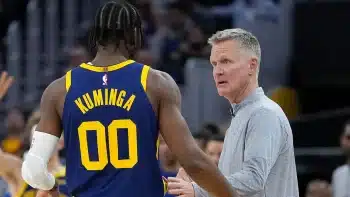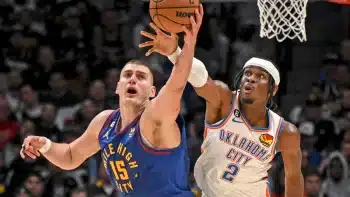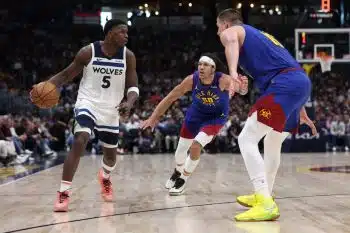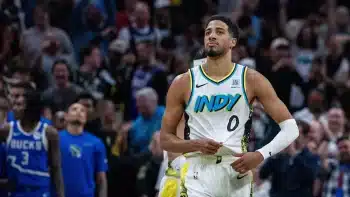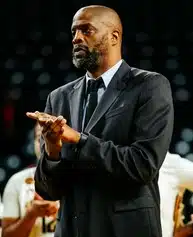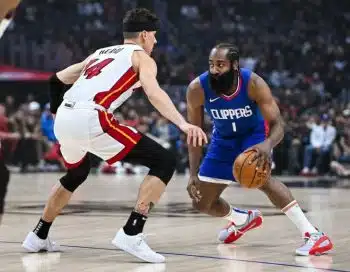NBA
Ranking The NBA’s Northwest Division Teams
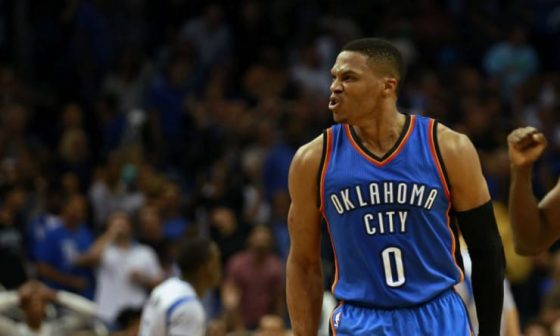
With Kevin Durant’s shocking departure, the Oklahoma City Thunder’s reign over the Northwest Division seems like less of a sure thing moving forward. The Thunder have won the division in five of the past six years and still have a talented roster (especially with Russell Westbrook locked up), but they do seem more vulnerable than ever.
That’s because the other four Northwest teams (Portland, Utah, Denver and Minnesota) continue to develop their young cores and made some solid additions this offseason. Each of these teams feature a lot of youth, and we can expect very competitive play within the division this year.
Today, let’s take a look at where each team in the division stands and evaluate their recent moves.
#5 – Minnesota Timberwolves (29-53 last season)
Key Additions: Kris Dunn, Jordan Hill, Brandon Rush, Cole Aldrich, hired coach Tom Thibodeau
Key Subtractions: Tayshaun Prince, Andre Miller, Greg Smith, Damjan Rudez
Minnesota has had a relatively quiet offseason besides the hiring of their new head coach Tom Thibodeau, who is expected to work wonders with this very promising and talented team. The Wolves are focused on building around this current young core, and bring back largely the same group minus some of their older contributors from last year (Prince and Miller). Add in the likes of new veterans Brandon Rush, Jordan Hill and Cole Aldrich as well as the addition of lottery pick Kris Dunn out of Providence and the Wolves look like they’re onto something.
Minnesota seems ready to turn things around and end their rebuilding process sooner than later. They have found their cornerstones in Karl-Anthony Towns and Andrew Wiggins. Now, with Thibodeau mentoring the promising duo, these Wolves should make substantial strides next season and beyond. With Dunn, Ricky Rubio, Zach LaVine (who can slide over to the one) and Tyus Jones, the Timberwolves also have a considerable amount of depth at the point guard position. Although they may still find themselves below .500 at the end of the year, expect Minnesota to show significant improvement next year under the defensive-minded Thibodeau.
#4 – Denver Nuggets (33-49 last season)
Key Additions: Jamal Murray, Malik Beasley, Juan Hernangomez
Key Subtractions: D.J. Augustin
The Nuggets were close to making one of the biggest splashes of free agency when they offered Dwyane Wade a two-year deal worth over $50 million, but Wade ultimately joined his hometown Chicago Bulls. Denver still seems to have ways to go in their rebuilding process as they’ve had a hard time playing at a high level consistently. With that said, they may have found a developing star in 20-year-old Emmanuel Mudiay as well as some very talented frontcourt players in 21-year-olds Nikola Jokic and Jusuf Nurkic. While this team does have a talented young core, they’ll also be looking for veterans Danilo Gallinari (who can hopefully stay healthy after missing 52 games over the last two seasons), Wilson Chandler, Kenneth Faried, Darrell Arthur, Jameer Nelson and Mike Miller to produce and lead the team.
The Nuggets will bring back largely the same roster, although adding the three talented draft picks should help this team take a step forward. Murray and Beasley are just 19 years old and Hernangomez is 20, so this is a group with a lot of upside. Still, all three rookies have the talent to contribute in year one – especially on the offensive end. The Nuggets had a hard time scoring last season, ranking 20th in points per 100 possessions (102.7). They struggled even more on the defensive end, ranking 24th in the league in points allowed per 100 possessions (106.4). To improve on last year’s win total, Denver is relying on some of their young players (particularly Mudiay, Jokic, Nurkic and the rookies) to step up and Gallinari to stay healthy.
#3 – Utah Jazz (40-42 last season)
Key Additions: Joe Johnson, George Hill, Boris Diaw, Marcus Paige, Tyrone Wallace, Joel Bolomboy
Key Subtractions: Trevor Booker, Trey Burke
While the Golden State Warriors have understandably received nearly all of the offseason attention for landing Kevin Durant, the Jazz have quietly had a very strong summer. In adding veterans Joe Johnson, George Hill and Boris Diaw, Utah now has a very strong mix of younger and older players. This team finished last season just one game behind the eighth-seeded Houston Rockets, which would have been their first playoff appearance since the 2011-12 campaign. However, this young Jazz squad struggled down the stretch when the playoffs were right within their reach. Utah hopes adding these three veterans will push them forward and end their postseason drought.
Another underrated move by the Jazz this summer was extending head coach Quin Snyder, who has done a terrific job with this group. In the always competitive Western Conference, it is hard to say whether the Jazz will definitely be in the playoffs next year, but with the moves they made this offseason and another year of experience for their talented young core, it’s certainly the goal and very realistic.
#2 – Portland Trail Blazers (44-38 last season)
Key Additions: Evan Turner, Festus Ezeli, Shabazz Napier, Jake Layman
Key Subtractions: Gerald Henderson, Brian Roberts, Cliff Alexander
After missing out on their top targets in free agency – Hassan Whiteside (Miami HEAT), Chandler Parsons (Memphis Grizzlies) and Pau Gasol (San Antonio Spurs) – Portland’s offseason actually shaped up pretty well. Evan Turner is coming off of a strong season with the Boston Celtics, while Festus Ezeli improves the frontcourt and provides championship experience on a bargain deal. Portland’s front office made a clear statement that they are all-in with the guys they have now, as they matched Allen Crabbe’s large offer sheet from the Brooklyn Nets to keep him in Portland, extended C.J. McCollum for the foreseeable future and re-signed Moe Harkless and Meyers Leonard.
Going into last season, most people had the Blazers at the bottom of the conference after losing LaMarcus Aldridge, Wes Matthews, Nic Batum, Robin Lopez and Arron Afflalo. But Damian Lillard and McCollum had other ideas, making the playoffs, advancing past the Los Angeles Clippers in round one and giving the defending-champion Golden State Warriors an impressive fight in the second round. The Blazers seem to be heading in the right direction with a young and talented roster, a front office making strong moves and a very good head coach in Terry Stotts (whose deal was extended through the 2020 season). Expect Portland to build off of what they accomplished last season, as they will try to prove that last year’s success was no fluke.
#1 – Oklahoma City Thunder (55-27 last season)
Key Additions: Victor Oladipo, Domantas Sabonis, Ersan Ilyasova, Alex Abrines, Daniel Hamilton
Key Subtractions: Kevin Durant, Serge Ibaka, Dion Waiters
Kevin Durant’s decision to leave was a devastating blow, butt Thunder fans were able to rejoice as Russell Westbrook added two additional sesons extension including a player option in 2018-2019 to stay with Oklahoma City. They did part ways with other key pieces of their roster last year in Serge Ibaka, who was shipped to Orlando, and Dion Waiters, who took a deal with Miami. In trading away Ibaka though, the Thunder brought in the promising young talent of Victor Oladipo to accompany Westbrook in what should be a very exciting backcourt.
After being one win away from a trip to the NBA Finals last season, the Thunder will definitely have to get used to life without Durant and find new ways to score other than just giving the ball to Westbrook. Yes, they lost Durant, but Thunder fans still have an encouraging roster to look forward to next year as they also brought in Domantas Sabonis from Gonzaga and Alex Abrines from the Spanish league. With Ibaka leaving, expect much more from the Thunder big men Enes Kanter and Steven Adams. Obviously when you lose a guy like KD, it will take some time to get used to throughout the season, but Oklahoma City still has some nice pieces in places (and a guy named Russell Westbrook) so certainly don’t expect them to fall off the grid in the conference.
